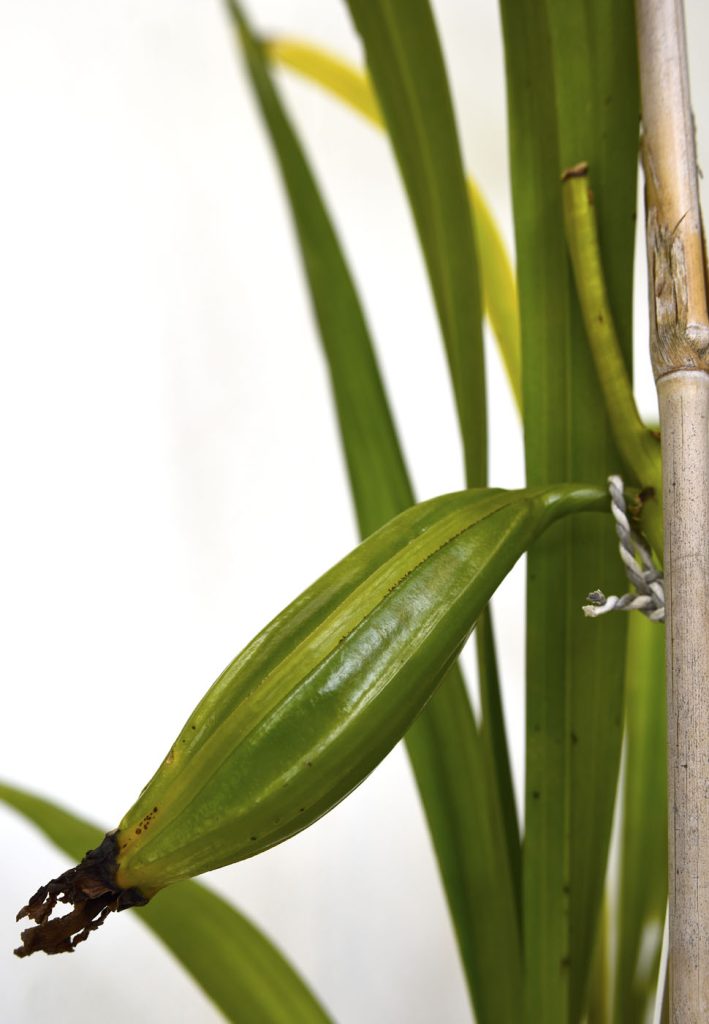Hybridising is the process by which a seedling is produced. And below, for the beginner is a quick explanation on how we do it. A much more in depth hybridising article about making your own crosses with photographs is available here.

To hybridise, or make a new crossing, we mate two flowers hoping to produce lots of baby orchids which have new and desirable characteristics, better, or different, to both of the parent plants, and hopefully better than other varieties available.
Every year thousands of new seedlings flower for the first time. Many are disappointing and no better than many plants currently being grown. However, some are different and superior and these are what we are seeking.
Over the years we have improved the quality of cymbidiums enormously. The new varieties being produced are generally much better quality and better performed, flowering more freely than the plants of yesteryear.
The Cymbidium Flower and the Process
A cymbidium flower has both male and female parts. The male part is two small balls of pollen located under the pollen cap at the end of the column. The female part, to receive the pollen, is a small cavity located just behind the pollen cap. Pollen can be easily removed and transferred to the cavity of another, selected flower. If both parents are fertile (usually not a triploid) a seed pod may be produced.
The stem of the flower, where the ovaries are housed, swells, and grows many thousands of very small seeds. The pod could be quite small for miniature varieties, or as big as a banana, for a large, standard sized flowers. The pod may take 12 months or more to fully mature. When a seed pod matures out in the wild it usually splits and discharges thousands of seeds into the environment.
How long Does it Take to Produce Seed?
In commercial production we usually remove the pod at about 7 or 8 months old, long before it splits. We then sow the seed into sterile flasks containing a special jelly like growing medium. Seed often takes 3 to 6 months to germinate, and small plants are produced in about 12 months from sowing. Some varieties germinate very poorly, or take much longer to grow big enough to deflask.
Each seedling, from mating two different plants, is different to all of its siblings, just like us humans. And hopefully, amongst all of the different flowers produced, one is a standout!
Producing new varieties is very exciting, and can be very rewarding, if superior varieties are produced. The use of quality parent plants, and an intimate knowledge of the genetics of the parent plants used, assists greatly to create superior prodgeny. So research and planning is key. The use of second rate parent plants, or a lack of understanding of genetic combinations, is a sure fire way to produce very poor results, four or five years down the track, and will completely waste your time.
